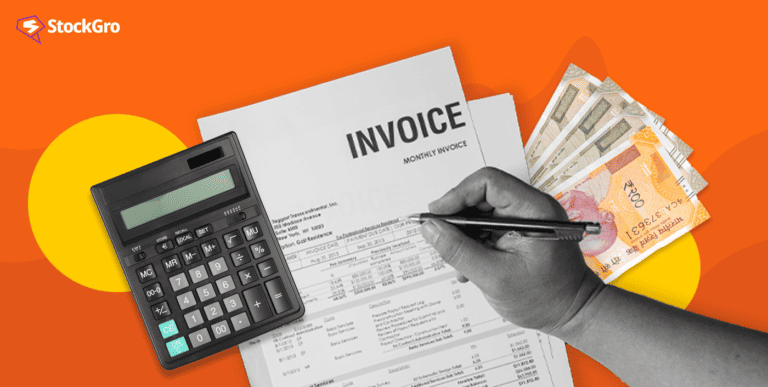
Companies often need money to grow the business or pay off debt. They often look for money from outside rather than using their own savings. Initial public offering (IPO) is a common way to get this money by selling company shares to the public for the first time.
But what if the company needs more money later? This is where Follow-on public offer (FPO) comes in. FPO allows a company that’s already publicly traded to sell more shares and get more money from investors. Let’s explore a little further on the topic.
What does an FPO mean?
The FPO, or follow-on public offer, happens once a company that’s already listed on the stock market chooses to sell more of its shares to the public. This differs from the IPO, or initial public offer, as the company doesn’t sell shares for the first time but only after already trading on the stock exchange.
For various reasons, companies will opt for FPOs as a means of generating additional funds. It could be for reasons such as expanding their operations, settling lingering debts, or procuring other businesses.
Trading on the stock market commences after the company prepares a document outlining how many shares will be sold and for what price of their FPO, which operates similarly to an IPO. Investors are then given access to the shares.
You may also like: Understanding how a secondary offering IPO works & types
How does a follow-on public offer (FPO) work?
This is how an FPO works to issue additional shares to investors:
- Intermediaries appointment: A company planning an FPO hires investment banks and underwriters. These experts help in structuring the offer.
- Offer document: The company creates an offer document and submits it to SEBI (Securities and Exchange Board of India). This document includes crucial details like the size of the FPO, the number of shares to be issued, and the lot size.
- Pricing: After getting SEBI’s approval, the company announces the price per share for the FPO. This is the cost at which you can buy shares.
- Opening and closing: The FPO is opened for a fixed duration. During this time, you can bid for shares. When the time is up, the FPO is closed and no more bids are accepted.
- Allotment and listing: After closing, the company allots shares to the bidders at the final offer price. These new shares are then listed on stock exchanges, making them available for trading.
What happens in an FPO, and how to subscribe for it?
Since the company is already listed, in an FPO (follow-on public offer), the new shares are rated lower than the present market rate. This low price aims to attract more buyers. But be cautious, if the FPO shares are not in high demand, the market price of the company’s stock could fall to match the FPO price.
Subscribing to an FPO can be less risky than an IPO (Initial Public Offer). This is because the company is already known and has a track record. You can look at past earnings, stock performance, and management strategies to make an informed decision.
The low FPO price often draws investors. Many buy at this discounted rate and then sell at a higher market price, making quick gains. However, this requires timing and understanding of market dynamics.
Though easier than evaluating an IPO, FPOs still need research. You should study the company’s past performance and plans for raised capital before investing. So, for those willing to do their homework and take calculated risks, FPOs offer a chance to buy shares at a discounted price.
Also Read: Understanding the primary market
What are the types of FPO?
There are two main types of Follow on Public Offer (FPO):
- Dilutive FPO
In a Dilutive FPO, the company issues more shares. The overall value of the company stays the same, but now it’s spread over more shares. This leads to a drop in earnings per share (EPS) and can affect the share price. This type of FPO is generally done to gather more money for the company, often to pay off debt or for expansion.
- Non-Dilutive FPO
In a Non-Dilutive FPO, existing shareholders sell their shares to the public. The money from this sale goes to the individual shareholder, not the company. This means that the EPS and the overall valuation of the company remain unchanged.
Why is FPO Needed?
Companies usually opt for a Dilutive FPO to raise more money. This new capital can be used for various reasons like buying new assets, research and development, or paying off existing debt.
Example of an FPO
An example of an FPO in India is Yes Bank, which launched its Follow-On Public Offer on July 15, 2020, and closed it on July 17, 2020.
The bank aimed to raise funds to improve its financial health. Each share in this FPO had a face value of Rs 2 and was priced in the range of Rs 12 to Rs 13. The minimum number of shares an investor could buy in one lot was 1,000.
The total size of this FPO was Rs 15,000 crores. These shares were available for trading on stock exchanges shortly after the FPO closed.
Also Read: Demystifying offer for sale (OFS): A wild ride for share prices!
Difference between FPO and IPO
Infographic : FPO vs IPO
This table summarizes the main distinctions between IPOs and FPOs, focusing on their stage, purpose, impact on ownership, listing status, and effect on EPS.
| Criteria | IPO (Initial Public Offering) | FPO (Follow on Public Offer) |
| Stage | Private company goes public | Company is already publicly listed |
| Purpose | Raise capital for the first time | Raise additional capital or reduce debt |
| Ownership | Dilutes promoter’s ownership | Public ownership already exists; number of shares increase |
| Listing Status | Becomes publicly traded post-IPO | Already publicly traded |
| Earnings Per Share (EPS) | Not applicable; first-time public earnings | Likely to decrease as more shares are issued |
Benefits of FPO
| Benefit | Explanation | |
| Capital Generation | Raises extra money for company needs | |
| Liquidity Boost | More shares in market, easier to trade | |
| Investor Spread | Attracts varied investors, reduces risk | |
| Reputation Uplift | Successful FPO shows market confidence |
Let’s wrap up
An FPO (or Follow-on Public Offering) lets a company that already went public through an IPO get more money. This is the only way the company can get more public funds once it’s listed.
It’s good for the company because they get money for expanding. It’s also good for investors who can buy more shares and possibly make money if the company does well. But FPOs can be risky, so it’s important for investors to do their own research before putting money in.

